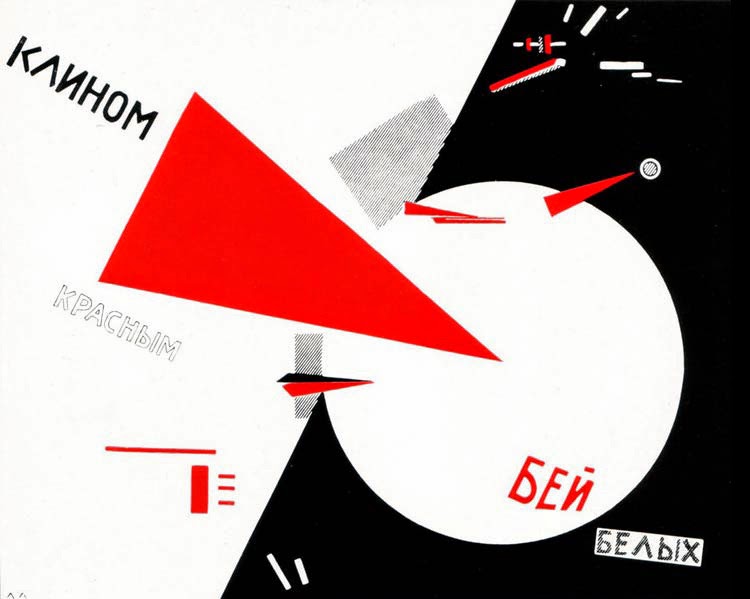More El Lissitzky
El Lissitzky was part of the Russian Constructivist movement that flourished in the early days of the Revolution, around 1920 to 1930, and as such is intended to have a political component. Should I apologize because I have little idea of or appreciation for what the politics is about but just love the way the artwork looks? This reminds me of Nina Simone, whose masterful singing means more to me than her politics, which I do appreciate, but . . . .
Let me take a stab at the Constructivists and their oeuvre anyway. From my recent research I see that they intended art to come down from its perch as an elite pursuit and possession. Further, the subject matter of art would be no longer be flowers, still lifes, landscapes, and portraits of the wealthy. Instead, art would be constructed out of basic formal building blocks, mostly geometric. And because art is no longer elitist, it would merge with design and architecture to create a holistic environment for all people that is aesthetically sophisticated. Constructivism did indeed go on to have a huge influence on architecture and design, especially as expressed in the Bauhaus and International styles, and even later in the New Wave of the 70s and 80s, as in this red and black propaganda poster, where the red wedge represents the victorious red army. By the 70s state socialism was on the way out, but the visual style was as big as ever.
To the extent that the Constructivists merged their style with the Social Realism more favored by the Soviets, they certainly appeared political, but that's not the part of their aesthetic that survived and thrived throughout the 20th century, nor is that the part I like. I like beautiful abstractions like this one, which had the vaguely socialist title, The New Man. What's striking to me is that for all the talk of socialism and the machine age, the tone of many El Lissitzky works is, at least to me, quite soothing.
Let me take a stab at the Constructivists and their oeuvre anyway. From my recent research I see that they intended art to come down from its perch as an elite pursuit and possession. Further, the subject matter of art would be no longer be flowers, still lifes, landscapes, and portraits of the wealthy. Instead, art would be constructed out of basic formal building blocks, mostly geometric. And because art is no longer elitist, it would merge with design and architecture to create a holistic environment for all people that is aesthetically sophisticated. Constructivism did indeed go on to have a huge influence on architecture and design, especially as expressed in the Bauhaus and International styles, and even later in the New Wave of the 70s and 80s, as in this red and black propaganda poster, where the red wedge represents the victorious red army. By the 70s state socialism was on the way out, but the visual style was as big as ever.
To the extent that the Constructivists merged their style with the Social Realism more favored by the Soviets, they certainly appeared political, but that's not the part of their aesthetic that survived and thrived throughout the 20th century, nor is that the part I like. I like beautiful abstractions like this one, which had the vaguely socialist title, The New Man. What's striking to me is that for all the talk of socialism and the machine age, the tone of many El Lissitzky works is, at least to me, quite soothing.


Comments
Post a Comment